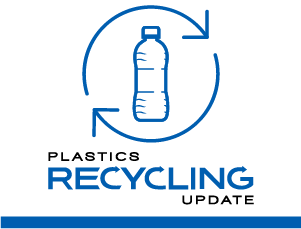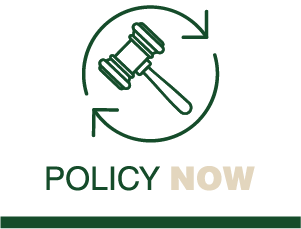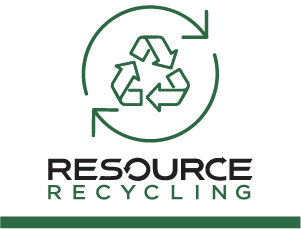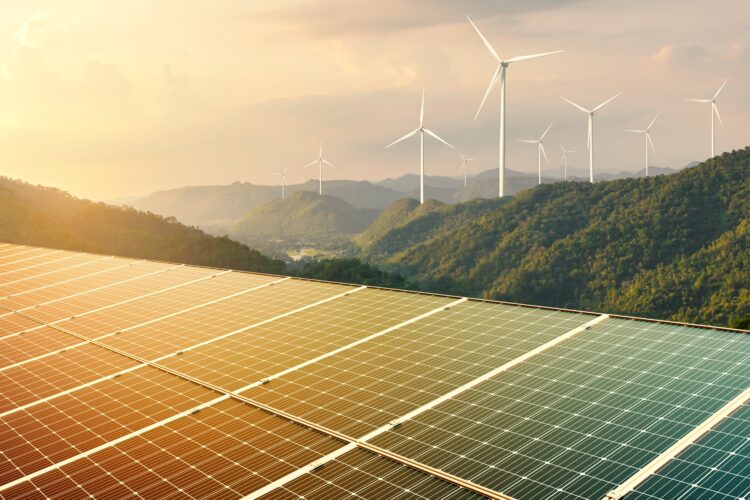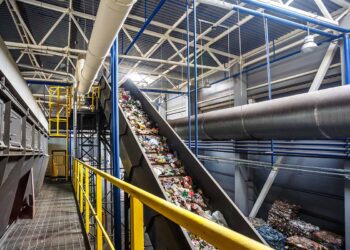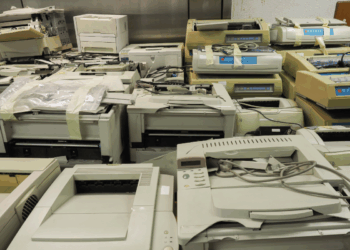This article appeared in the April 2025 issue of Resource Recycling. Subscribe today for access to all print content.
As extended producer responsibility continues expanding in fits and starts around the U.S. — for carpet and paint here, batteries and packaging there — the implements of renewable energy are emerging as another EPR frontier.
Washington is the only state with a solar panel EPR policy in place, according to the Product Stewardship Institute, but similar bills have been proposed this year in Connecticut, New York, and Georgia, and New York’s Niagara County has had its own scaled-down version since 2022. A proposal covering wind turbine blades has been introduced in Illinois, and another for both solar and wind is up for consideration in Minnesota.
EPR policies in general require the manufacturers of certain goods to contribute money and other resources toward programs that collect and recycle those items, often in increasing proportions over time.
“The reason I brought this bill, when a lot was happening with green energy, was because I knew there needed to be a plan for the end of life for this stuff,” said Minnesota State Rep. Peggy Scott (R-Andover), adding she wants to avoid a repeat of a $22 million hazardous waste cleanup in her district several years ago. “These blades are huge. And I knew there were some pretty powerful chemicals involved.”
The original language of Scott’s bill would have mandated producers of these renewable energy systems to implement a product stewardship program for the collection and recycling of discarded materials and prohibited the sale of such products in the state unless producers were part of a stewardship plan approved by the Minnesota Pollution Control Agency.
Progress on the renewables EPR front has been bumpy and uneven, however. Shortly after Scott’s bill was introduced, she enacted a delete-all amendment, which stripped out everything except a moratorium on disposing of wind and solar infrastructure in landfills, pointing to a recent report from the MPCA on the topic that she and other state officials are reviewing.
“In talking to the MPCA, they were supportive of the plan and thought it was an important first step, but they needed more time to figure out if this needed to be done with legislation or more administratively,” Scott added. “I think more will happen in the future. People want this to be addressed, and I told the MPCA I want to continue to work with them on this.”
And while Washington’s law was approved in 2017, the state has yet to enforce it, said Dave Bennett, communications manager for the solid waste management program run by the state’s Department of Ecology.
The Photovoltaic Module Stewardship and Takeback Program requires solar panel manufacturers to provide a convenient, environmentally sound recycling system for panels bought after the law’s passage. It also requires manufacturers of panels sold in the state to have a state-approved stewardship in plan as of July 1, 2025. Noncompliance carries a fine of up to $10,000 per panel sale.
“Many solar panel manufacturers missed the July 2024 deadline to submit a stewardship plan,” Bennett said. “While (the Department of) Ecology is working to bring manufacturers into compliance, we believe the majority will continue to disregard the law or decide to stop selling panels into Washington.”
Challenging panels
Solar panels and wind turbine blades contain valuable metals and highly refined semiconductor materials that can be recovered and used in new products. But both are currently difficult to recycle through existing methods due to their durability and composite construction. More than two-thirds of panels meet the legal definition of hazardous waste under the EPA, according to Scott’s office.
“One of the most pressing concerns with improper solar panel disposal is the presence of hazardous metals, including lead, cadmium and selenium,” said Brett C. Henderson, CEO and co-founder of Solar Panel Recycling, which has facilities in North Carolina, Georgia and Texas.
“Solar panels are designed to be durable and well-encapsulated, making them safe while in use on rooftops or in the field,” Henderson said. “However, when a panel’s protective encapsulation is compromised — whether through improper landfill disposal or incomplete recycling practices — the risks increase significantly.”
Beyond environmental pollution, the landfill disposal of solar panels is a growing concern due to capacity constraints as more and more panels reach their end of life, he added.
New York’s Niagara County became the first local government in the U.S. to pass an extended producer responsibility law relating to solar panels. As of Aug. 1, 2022, Local Law No. 4 requires all manufacturers of solar panels to finance the takeback and recycling of photovoltaic modules.
The county was home to several environmental mishaps, most notably the Love Canal toxic chemical dump that was discovered leaking in Niagara Falls in the 1970s. That “unsettling environmental legacy,” along with the state’s growing solar energy presence, prompted action, said Dawn Timm, director of the county’s Division of Environmental and Solid Waste. New York is ninth in cumulative solar production in the nation, according to the Solar Energy Industries Association.
“The (county) Legislature made an effort to preserve the long-term environmental legacy of the community amid the proliferation of solar development,” Timm said. “We’re taking proactive steps now to prevent mismanagement in the future.”
Companies must come into compliance within 30 days of their first solar panel sale in the county by developing a stewardship plan to ensure panels are taken back safely and at no additional cost to residents. Plans must include:
- A description of how manufacturers will finance and adequately fund the takeback and recycling system.
- Details on how the program will minimize the release of hazardous substances and maximize the recovery of components.
- Stipulations for product takeback at convenient locations within the county.
- Performance goals requiring 100% of panels recaptured by 2026 and 85% of that material being recycled by 2031.
- Assurances of enough available money to finance the program.
- Annual reports documenting implementation.
The law charges companies $1,000 for an initial stewardship plan fee and then $250 per year afterward. Violations carry a penalty of up to $100 per module per day. The county can also seek injunctions against developers that continue projects without a plan.
The law was written in conjunction with the Product Stewardship Institute, a nonprofit that works to reduce the impact of consumer products on health and the environment.
“Solar panel recycling is a new frontier, and as the first generation of solar panels comes out of commission, this type of forward-thinking policy will be needed by other communities, counties and states,” said Scott Cassel, PSI’s CEO.
To date, the county has approved nine plans, Timm said — one manufacturer plan, for LG Electronics, and eight project-specific approvals.
“As the first in the nation to establish such a law, Niagara County has continuously responded to the curiosity of other states, governments and related organizations by providing insight and feedback about our experiences,” Timm said. “Early on, developers and installers were less than pleased. However, we have demonstrated a reasonable approach to implementation and feel we equally support development while preserving the integrity of our community.”
Mixed perspectives
Henderson at Solar Panel Recycling said that while EPR has proven effective in electronics recycling, he has concerns about its practicality and overall effectiveness in the solar industry, and a straightforward landfill ban on solar panels would be more effective.
North Carolina has a ban on solar disposal in construction and demolition facilities that goes into effect this December, for example, and a broader landfill ban has been proposed in Illinois this session.
“This would naturally drive stakeholders — including manufacturers, asset owners, true solar recyclers and collectors — to develop the most efficient methods for collection and proper recycling,” he said. “An open-market approach would drive continuous research, development and innovation in solar recycling and collection, fostering the most efficient and cost-effective solutions without the constraints of EPR mandates.”
One of his concerns is the effectiveness of enforcing EPR policies on foreign solar manufacturers, who produce the vast majority of panels sold in the U.S., based on data from the U.S. International Trade Commission. He said the greatest improvements could come from innovating new applications for recovered materials, such as refining silicon into nanoparticles for various industrial applications.
A.J. Orben, co-founder of We Recycle Solar, a Yuma, Arizona-based company that handles recycling of solar panels and often advises on proposed state policy, noted that outside of Washington the cost of recycling is borne by the asset holder.
“It’s costly,” he said. “The economics don’t make sense. It costs more to break the panels down than the value of the recovered materials.”
Balancing that math is one of Washington’s struggles, Bennett said, along with limited recycling options in the Pacific Northwest and hazardous material concerns. A pair of bills before the state legislature in March would let the industry continue to operate legally in Washington while fixes are developed, delaying the effective date until at least 2028.
“Our legislative proposal will establish a facilitated advisory committee to identify concerns with the law and develop recommendations to overcome setbacks,” Bennett said.
“Modifying the law will make the solar takeback program stronger and remove barriers to increased deployment of solar in Washington, helping the state achieve clean energy goals.”
But not everyone agrees that more time is needed. The Energy Fair Trade Coalition, a nonprofit advocating for accountability in the energy sector, sent a letter to Washington Attorney General Bob Ferguson in October calling for immediate enforcement of the law. Executive Director Bret Manley cited a potential recycling cost of up to $67.5 million for panels that have been sold in Washington since 2017, a cost companies aren’t on the hook for.
“This glaring oversight threatens consumers’ ability to responsibly recycle their solar panels,” he said in the letter. “Washington resources are precious, and ensuring a clean environment for future generations is paramount.”
A solution for wind turbines
It’s no coincidence Minnesota is considering turbine EPR, as the state and its neighbor to the south have been the site of several disputes over wind turbine disposal.
In September the Minnesota Public Utilities Commission extracted a pledge from wind power developer NextEra Energy to move dumped turbine blades after several years of complaints. Around the same time, the Iowa attorney general filed suit against Global Fiberglass Solutions, a blade-recycling venture based in Washington, over claims of improper blade disposal.
Wind turbine blades primarily consist of fiberglass, balsa wood and foam, along with other trace material that is held in shape using an epoxy resin. But blades have been notoriously difficult to recycle because of the epoxy resin that coats the fiberglass, said Jeff Woods, director of business development for Regen Fiber in Fairfax, Iowa.
The company recycles end-of-life wind turbine blades and virgin scrap material left over from wind blade manufacturing to create reinforcement fibers for industrial applications. Additionally, the company operates a facility in Des Moines that recycles scrap from new blades and maintains a blade processing plant in Lubbock, Texas. Its products can be used in concrete, asphalt and composite applications.
Regen’s recycling process is mechanical, with blades arriving at its facilities after shredding. Instead of trying to remove the resin, which can be a chemically and energetically intensive process, the company takes advantage of the epoxy’s positive benefits like alkali resistance and added strength and durability.
“We’re addressing a critical need in the wind industry by offering a truly sustainable recycling solution that diverts blades from landfills or being burned,” Woods said.



